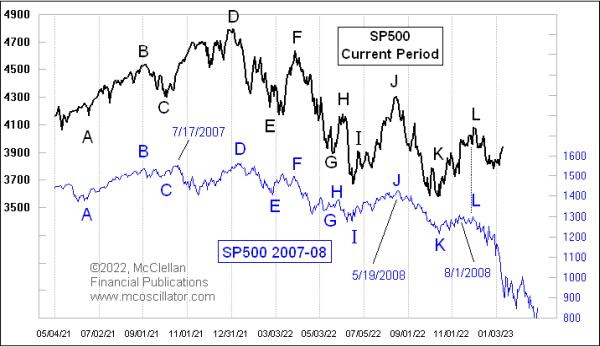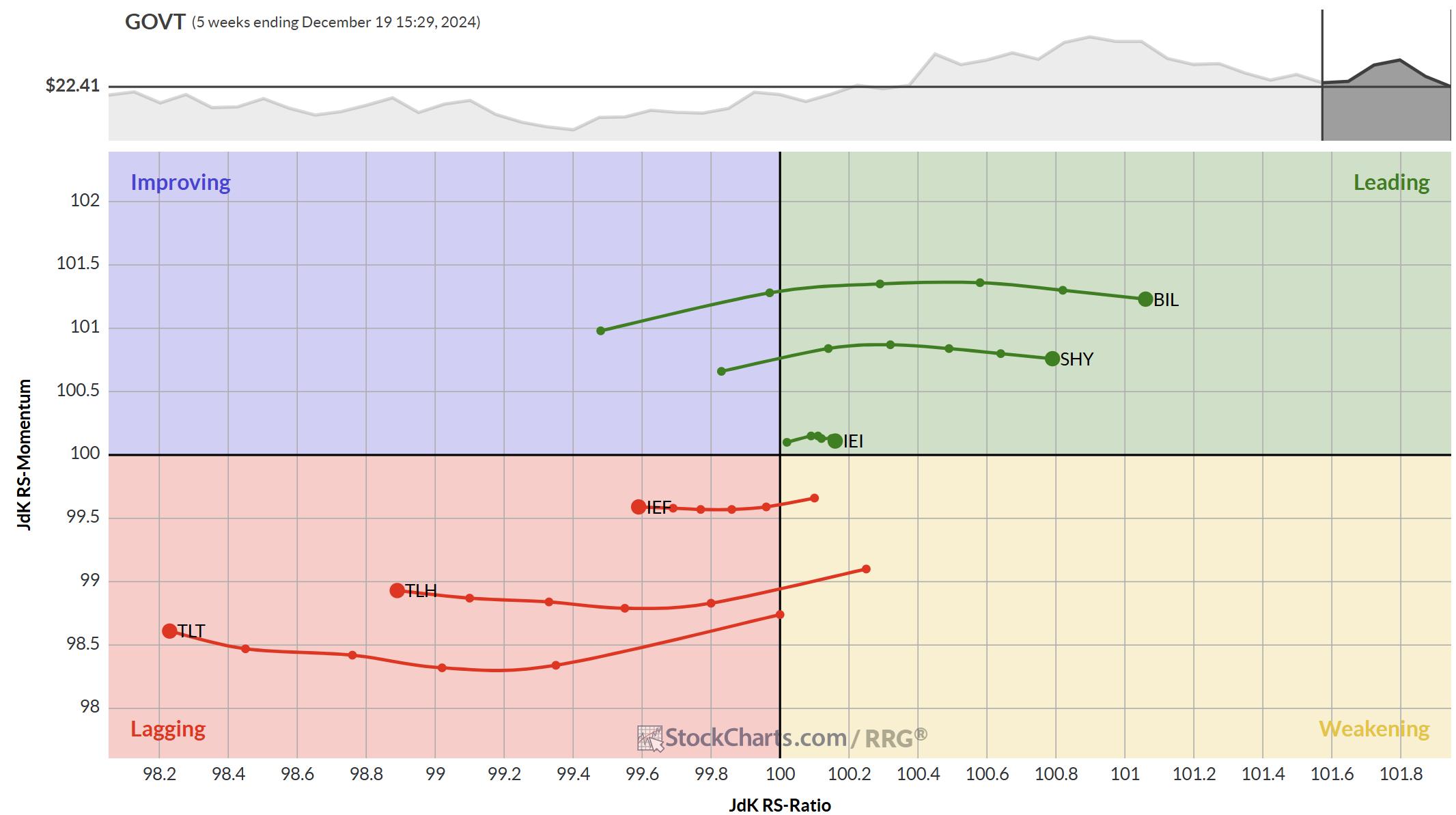Finding and tracking price pattern analogs is fun as long as you understand that correlation will never be absolutely perfect. And the additional point to understand is that every pattern analog will break the correlation at some point – they mostly do so at a time when you can most rely on them to keep working.
This week’s chart shows a fairly thorough break in correlation with a previous pattern, in this case the 2007-09 bear market. It has worked well throughout 2022. The letters in the chart are just a means to identify similarities between the two price charts. The correlation of the two patterns was initially slightly weaker at the left end of the chart, but became tighter throughout 2022.
If the stock market continued to follow this analogous pattern in 2023, then we should now see a sharp decline, echoing the September 2008 stock market crash triggered by the collapse of Lehman Brothers. Instead, the stock market is showing nice strength in January 2023 and gives hope that the “January Barometer” will indicate a bullish year. This omen of stock market behavior has some statistical problems, such as: I have detailed here back in 2019.
But people can still believe in something the stats don’t support, and that can cause excitement in the market for a while. Whatever the source of the new strength, and whatever its long-term significance, the strength we see now in January 2023 is a definite break with the 2008 pattern and so we can discard this as a pattern analog, which has been fun while it lasted, but which has broken its correlation and should not be expected to continue working in the future.
As a final note, one of the ways an analogue can start to break the correlation is that we can see the patterns reverse, still matching the timing of the previous pattern’s dance steps, but in reverse do. We may see that now. But any pattern fickle enough to invert its correlation is also fickle enough to disinvert without notice, so don’t count on that performance in this case.





